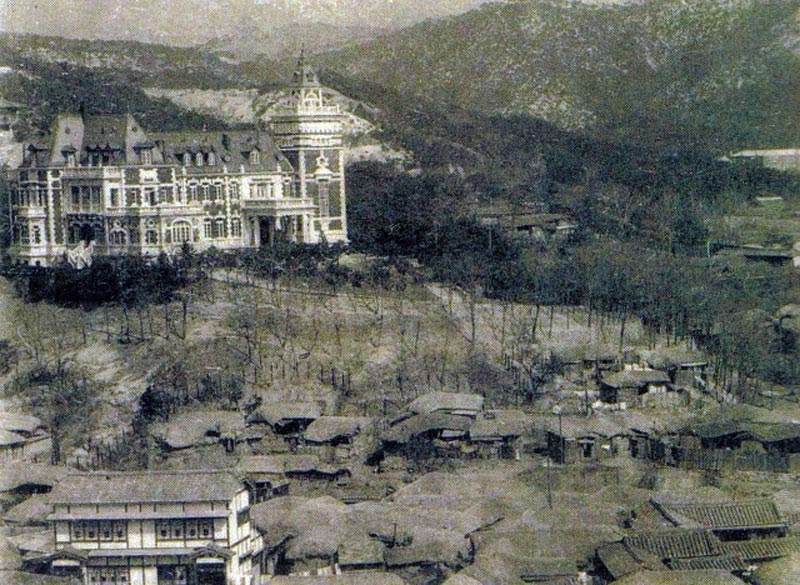한국어 번역 - 클릭
Heritage is not always associated with pleasant memories of the past.
Like Bukchon, the area to the east of the Changdeok Palace was once a hanok village and also home to many important officials of the Joseon court, and members of the the royal and noble families. Following the Japanese occupation of Korea, the character of the area began to change as more ordinary people settled there. But even today vestiges of history remain.
The area was once dominated by an enormous French-style mansion erected by Yun Deok-young(尹德榮) , Grand Chamberlain to the Royal Court. The mansion was easily the largest building in Korea, though the Changdeok Palace occupied a larger land area. During the Japanese occupation, the mansion became the Korean headquarters for Mitsui & Co, one of the major Japanese trading companies. Mitsui left abruptly in 1945 and later the building became home for the United Nations Commission for the Unification and Rehabilitation of Korea
In 1966, the mansion's roof damaged by fire. Four years later, in 1970 the building was demolished and the redevelopment of the area gradually got under way.
Today the area is crowded with small apartment blocks, modern houses in a variety of post-war idioms, and a sprinkling of commercial buildings. However, in the 1960's much of the area was still wooded nad, apart from Yun's mansion, the buildings were almost entirely hanoks, mostly with thatched roofs. A little to the right of the mansion, in the photograph below, you can see a small group of hanoks nestling in the trees. At the bottom of the photograph there is also a distinctive, three storey modern building.
 |
The Yun Deok-Yeong Mansion and surrounding area, about 1960 |
Yun Deok-young(尹德榮) was the Grand Chamberlain (侍宗院卿) of Royal Court of King Sunjong. the last Emperor of Korea and of the Joseon Dynasty. He played an important role in Japan's annexation of Korea by stealing the King's Great Seal(國璽) and stamping it on the plenipotentiary letter of attorney for the Japanese authorities. Though disputed, this became a key document for Japan in maintaining that their annexation of Korea was legal and took place with the agreement of the Korean government. Force majeur prevailed over any legal considerations since none of the Western powers or Russia were in a position to oppose the Japanese.
http://www.kahoidong.com
Contact
us
![]()